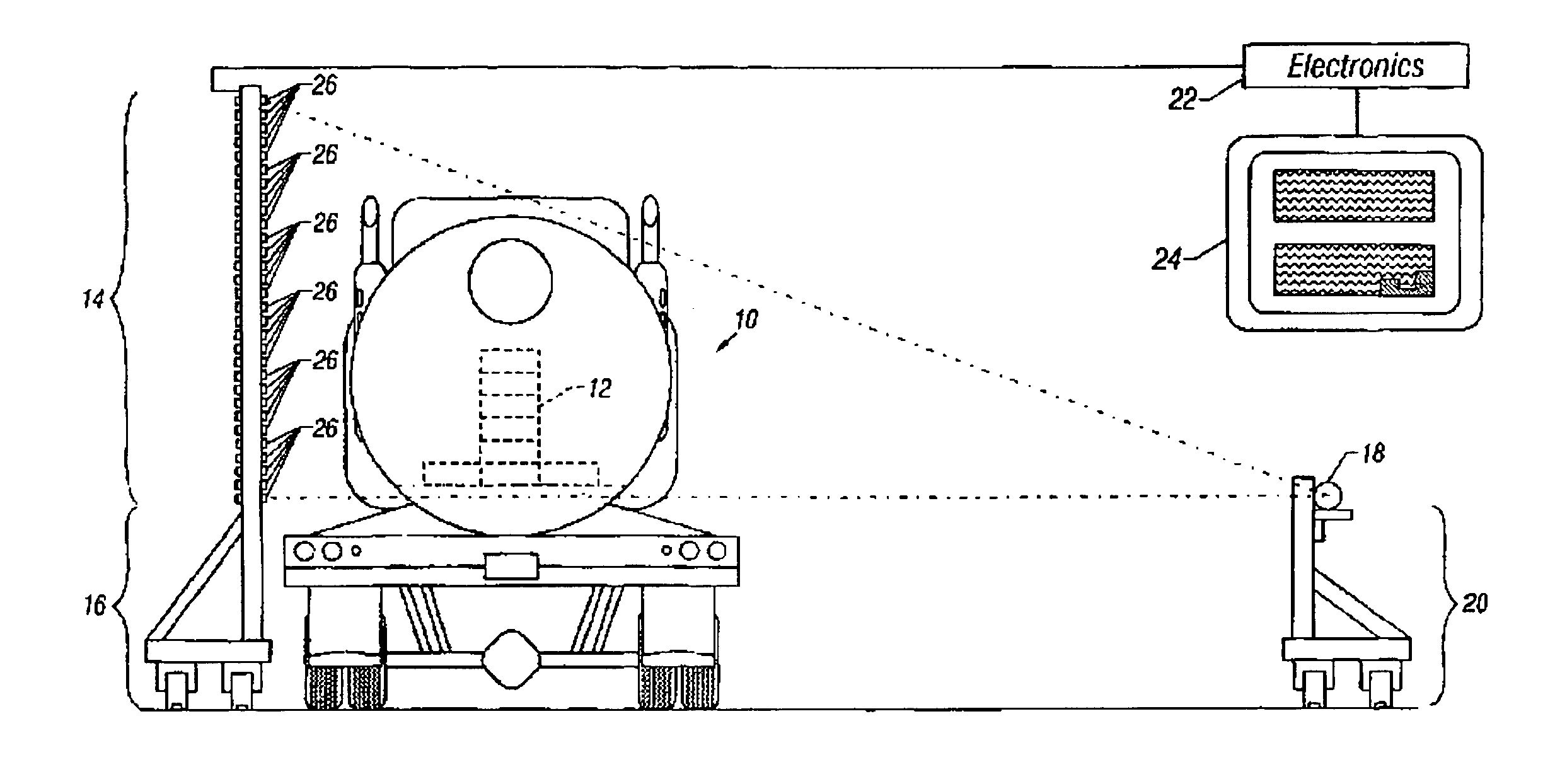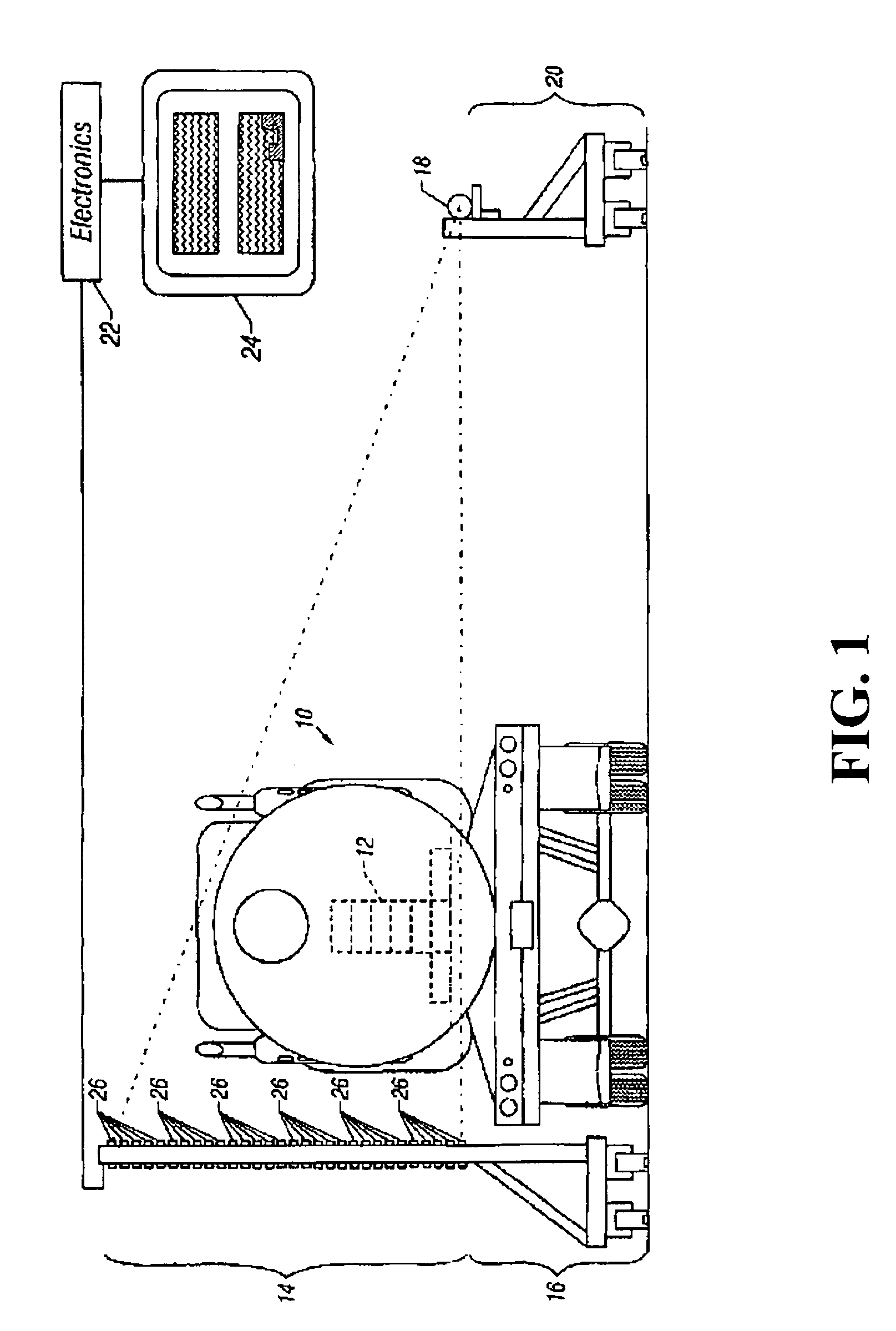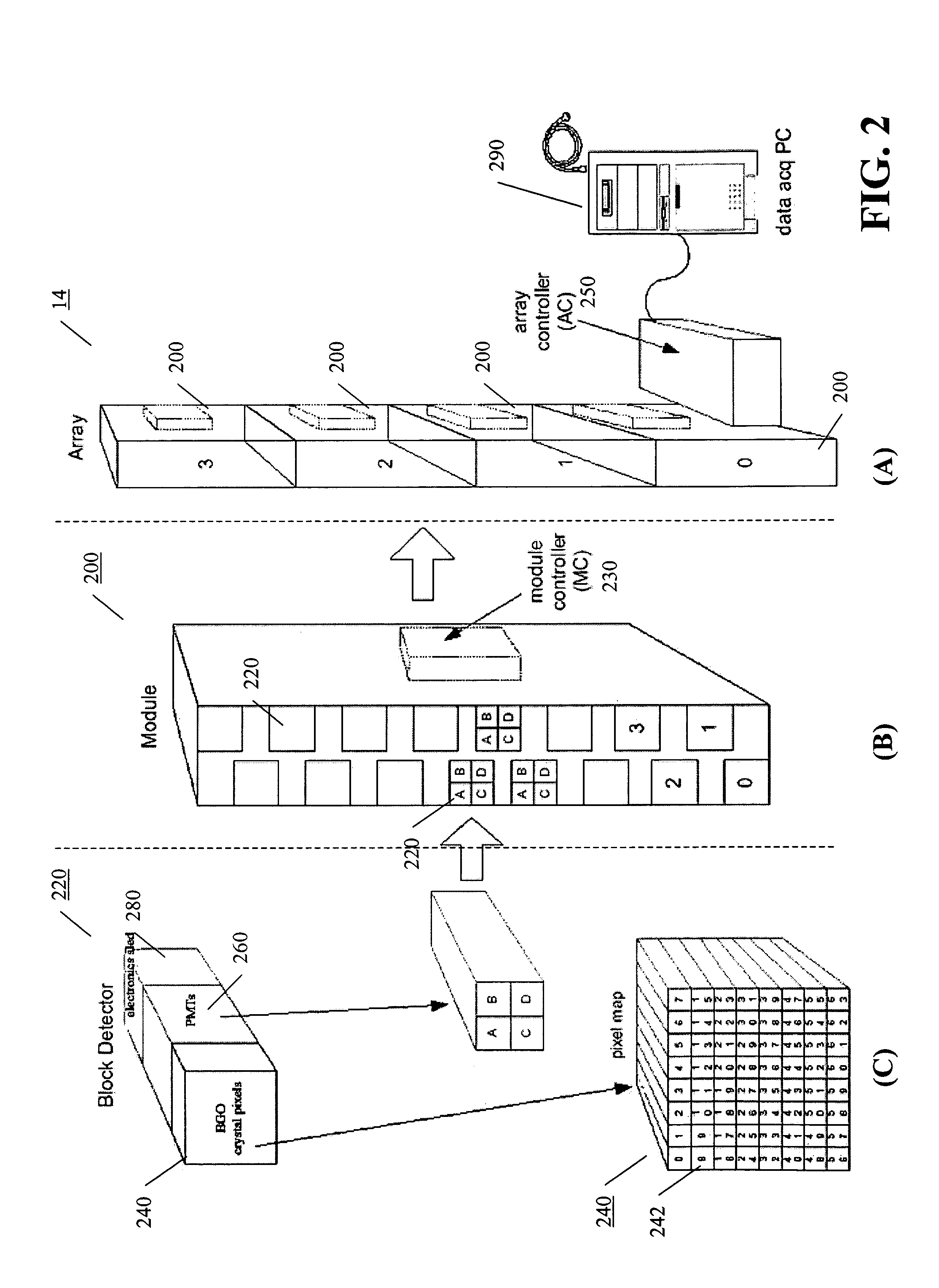Target density imaging using discrete photon counting to produce high-resolution radiographic images
a radiographic image and density imaging technology, applied in liquid/fluent solid measurement, machines/engines, instruments, etc., can solve the problems of limiting the number of vehicles that can be inspected, taking a half hour or more, and inconvenient and time-consuming for both customs officials and the driver and occupant of the vehicl
- Summary
- Abstract
- Description
- Claims
- Application Information
AI Technical Summary
Benefits of technology
Problems solved by technology
Method used
Image
Examples
Embodiment Construction
[0022]Reference is now made in detail to embodiments of the present invention, some examples of which are illustrated in the accompanying drawings, in which like numerals indicate like elements, showing a method and system for target density imaging using discrete photon counting to produce improved spatial resolution radiographic images and maintain high system sensitivity.
[0023]Referring first to FIG. 1, a schematic diagram is shown of a system made in accordance with one embodiment of the present invention and of a tanker truck containing contraband material, wherein discrete photon counting is used to perform density measurements in the tanker truck and wherein an image is generated of the contents of such tanker truck in response thereto.
[0024]Shown are the tanker truck 10, concealed contraband 12, a gamma-ray detector array 14, a detector array truck 16, a radiation source 18, a radiation source truck 20, processing electronics 22 and a graphical display device 24. It should b...
PUM
 Login to View More
Login to View More Abstract
Description
Claims
Application Information
 Login to View More
Login to View More - R&D
- Intellectual Property
- Life Sciences
- Materials
- Tech Scout
- Unparalleled Data Quality
- Higher Quality Content
- 60% Fewer Hallucinations
Browse by: Latest US Patents, China's latest patents, Technical Efficacy Thesaurus, Application Domain, Technology Topic, Popular Technical Reports.
© 2025 PatSnap. All rights reserved.Legal|Privacy policy|Modern Slavery Act Transparency Statement|Sitemap|About US| Contact US: help@patsnap.com



